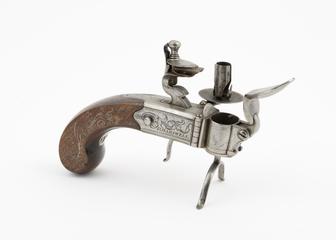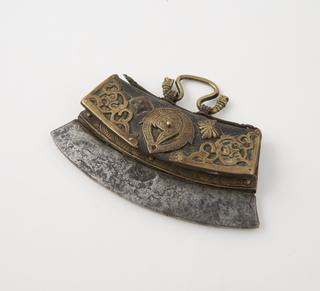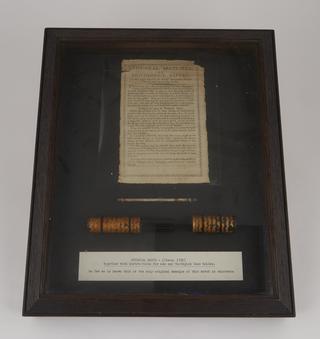
Thong fire-drill and hearth, Port Clarence, Alaska

Thong fire-drill and hearth, which is held between the teeth, with a thong whose handles are made of walrus-ivory and a bear’s tooth, a wooden mouthpiece that is used to keep the top of the drill in position, and a socket of soap-stone let in to permit the drill to revolve more freely, as used by the Indigenous population of Port Clarence, Alaska, United States, formerly recorded as Eskimo, collected by Tarleton H. Bean, 1895 for the American Museum of Natural History, United States
Humans have throughout history used different techniques and tools to create life-sustaining fires. One of the oldest methods is based on friction. Solid combustible materials are slowly ground against each other or a hard surface, until their temperature is increased, and an ember is produced. Tinder, which is a fine material with the ability to combust quickly, is placed where the two tools touch and ignited by the ember.
Friction methods are presumed to have originated around the same time as percussion methods. While the principle is roughly the same across the world, the techniques and tools vary and range from drilling to ploughing and sawing. This fire-drill, used by the Indigenous population of Port Clarence, Alaska, is held between the teeth and operated with a thong.
This object is part of the Bryant and May fire-making collection, which used to be displayed in a private museum within the Bryant and May match-making factory’s offices. The collection comprises around 1200 objects, dating from the Stone Age to the early 20th century that illustrate the variety of tools and techniques humans across the world have used to create fires.
This object was collected in 1895, when Britain’s colonial power was at its peak. Tracing its provenance is therefore difficult and part of the long and problematic history of colonial exploitation.
Details
- Category:
- Firemaking
- Object Number:
- 1937-682/73
- Materials:
- wood (unidentified), leather, walrus ivory, bear's tooth and stone
- Measurements:
-
hearth: 273 mm
drill: 339 mm
thong: 876 mm
mouth piece: 114 mm
- type:
- hearths
- credit:
- Wilkinson Sword Ltd.




